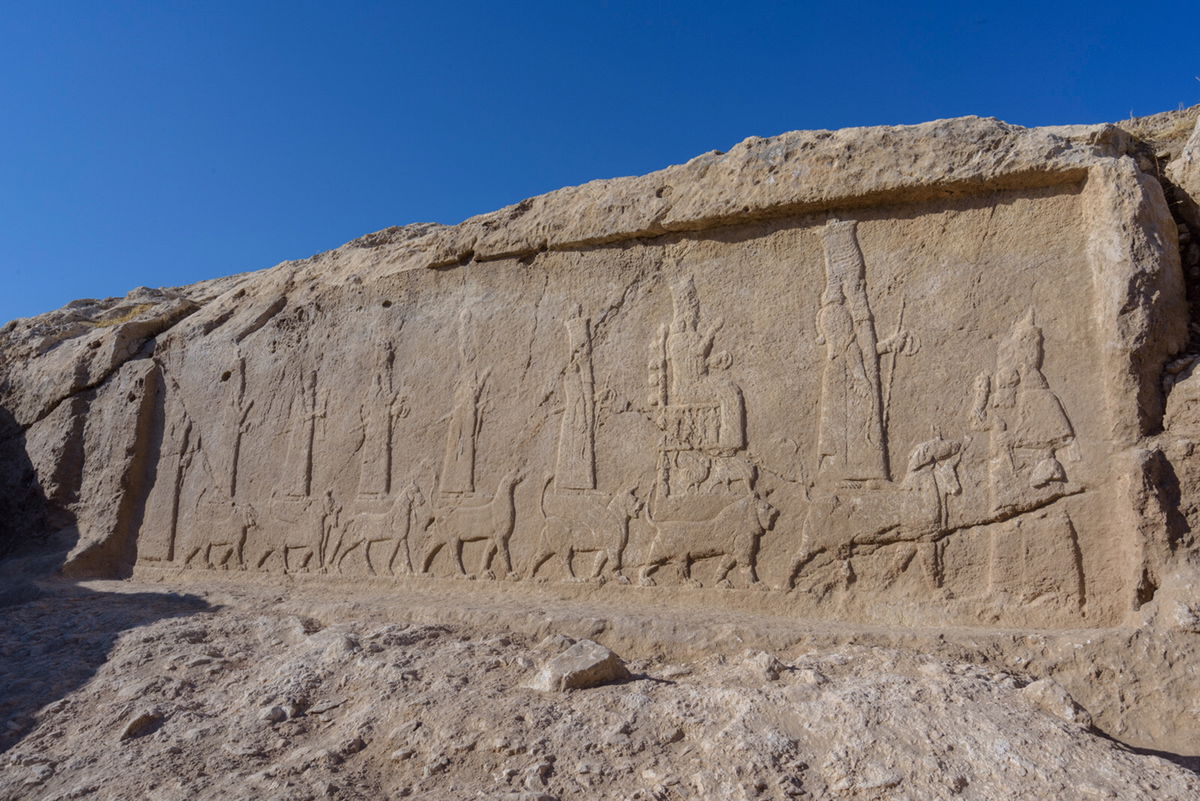Archaeologists restoring ISIS damage in Iraq discover Assyrian reliefs unseen for millennia

Christian Edwards, CNN
Archaeologists in northern Iraq have uncovered some extraordinary Assyrian rock carvings dating back around 2,700 years.
The discovery was made in Nineveh, east of Mosul, by a joint US-Iraqi excavation team completing reconstruction work on the Mashki Gate, which ISIS militants destroyed in 2016.
Iraq was home to some of the world’s oldest cities and earliest civilizations, including the Babylonians, the Sumerians and the Assyrians.
In around 700 BC, the Assyrian King Sennacherib made Nineveh his capital and built the Mashki Gate — meaning the “Gate of God” — to guard its entrance.
But the gate was one of the many historical monuments that became a victim of prolonged military conflict and acts of cultural vandalism in the area.
It was reconstructed in the 1970s, but was then destroyed with a bulldozer by ISIS soldiers during their occupation of Iraq.
During the occupation, University of Pennsylvania archaeologist Michael Danti “directed a project to preserve and protect cultural heritage in Iraq,” he told CNN, adding: “Mashki Gate was one of the sites on which I reported when ISIS deliberately destroyed it.”
When the Iraq Heritage Stabilization Program, which Danti directs, began work to rebuild the gate, they made a discovery he described as “so rare it was unimaginable.”
Buried beneath the gate’s ruins were seven slabs of marble bearing ornate carvings depicting Assyrian soldiers firing arrows — as well as palm trees, pomegranates and figs — all belonging to Sennacherib’s palace.
“We were all awestruck and virtually speechless. It was like a dream,” Danti said. “No one predicted that we would be finding Sennacherib reliefs in a city gate.”
Although there had been archaeological digs on the site before, in the 1960s and 1970s, this particular room had never previously been excavated, according to Danti.
While the gate was destroyed, “these remains were protected because they were buried,” he said.
The discovery offers exciting new opportunities for research, with archaeologists now returning to Mosul to dig deeper into the history of the Neo-Assyrian Empire.
Whereas previous discoveries like this have been taken abroad — such as to the British Museum and the Metropolitan Museum of Art in New York — these slabs will remain in Iraq.
“These slabs are the official state property of the government of Iraq and the Iraqi people,” Danti told CNN — adding that his fellow researchers at Pennsylvania and the University of Mosul “are absolutely delighted to have found these reliefs.”
“Access to cultural heritage is a human right, and groups like ISIS want to sever those links forever as part of their campaign of cultural cleansing and genocide,” he said.
An archaeological park
More extraordinary finds in the area were revealed in a ceremony on Sunday.
Faida Archaeological Park — about 19 miles from Nineveh — was uncovered after the completion of excavation works that began in 2019.
The Land of Nineveh Archaeological Project of Italy’s University of Udine found 13 reliefs carved into the walls of a six-mile-long irrigation canal.
Speaking to CNN, Udine archaeologist Daniele Morandi Bonacossi described the reliefs as “unique” and “without parallel in Near Eastern rock art.”
“The Faida reliefs constitute a monumental complex of remarkable interest through which Assyrian royal power implemented a sculptural program aimed at celebrating the creation of the hydraulic system that gave fertility and wealth to the surrounding countryside,” he said.
While some of the carvings were initially discovered in 1973 by British archaeologist Julian Reade, they were not fully uncovered until now.
The-CNN-Wire
™ & © 2022 Cable News Network, Inc., a Warner Bros. Discovery Company. All rights reserved.

